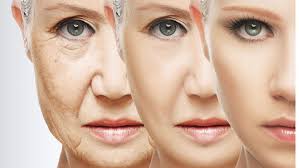anti-aging
Find the formula that works for your skin’s specific needs
Science has come a long way in developing and formulating ingredients that can be added to creams and serums to help slow and sometimes even reverse signs of skin aging. While there’s no true “facelift in a jar,” there are many products available that can help replenish and restore the skin’s texture and appearance.
Keep the following ingredient terminology in mind when you’re shopping for the best combination of products for your skin type and specific concerns:
Alpha hydroxy acids (AHA): Water-soluble acids that include glycolic, lactic and malic acids, among others. These chemical exfoliants help remove dead skin cells and smooth skin texture. They have a moisturizing effect and can be a good choice for dry or sun-damaged skin.
Antioxidants: A broad term for a wide variety of beneficial ingredients meant to fight the damaging effects of free radicals. Some of the better known examples are vitamins C and E, alpha-lipoic acid, green tea extract, resveratrol, grape seed, soy, genistein, pomegranate, coffee berry, Co Q-10, niacinamide and lycopene. Products containing antioxidants should be carefully stored in opaque, airtight containers, as light and air can break them down and destroy their anti-aging properties.
Beta hydroxy acid (BHA): Like AHA, BHA helps the exfoliation and turnover of skin cells. However, BHA works not only on the surface but also inside the pores to help unclog and shrink them, and because it is oil soluble it’s often a better choice for oily or acne-prone skin.
Hyaluronic acid: A humectant that holds water in the skin, keeping it more hydrated and looking firmer, plumper and softer.
Hydroquinone: A topical skin lightening ingredient that limits melanin production, often used on age spots and melasma (patches of discoloration on the skin). Available in both over-the-counter and prescription strengths.
Peptides: Chains of amino acids that combine to help make proteins, they help cells communicate to encourage the body to produce more collagen.
Retinol, retinoid, retinoic acid: These are all names for variations of vitamin A, one of the most powerful anti-aging ingredients on the market. Available in both prescription and non-prescription strengths, this antioxidant is in a class of its own and performs multiple functions including unclogging pores, smoothing rough skin texture, reducing the appearance of lines and wrinkles and helping to brighten and even out skin tone. It also helps the body boost collagen and elastin production, potentially leading to a smoother, fuller appearance.
Broad-spectrum sunscreen:A sunscreen that protects against both UVA and UVB rays is the No. 1 most important ingredient to prevent premature skin aging. If you could have only one product in your skin-care routine, this would be the thing to choose. Some other anti-aging ingredients can increase photosensitivity, making sunscreen even more important. For best results, opt for one that is SPF 30 or higher and water resistant. Based on personal preference, the formulation can be physical/mineral (e.g., zinc oxide, titanium dioxide) or chemical (e.g., oxybenzone, avobenzone), in a separate product or combined with a moisturizer or foundation.



Comments
Post a Comment